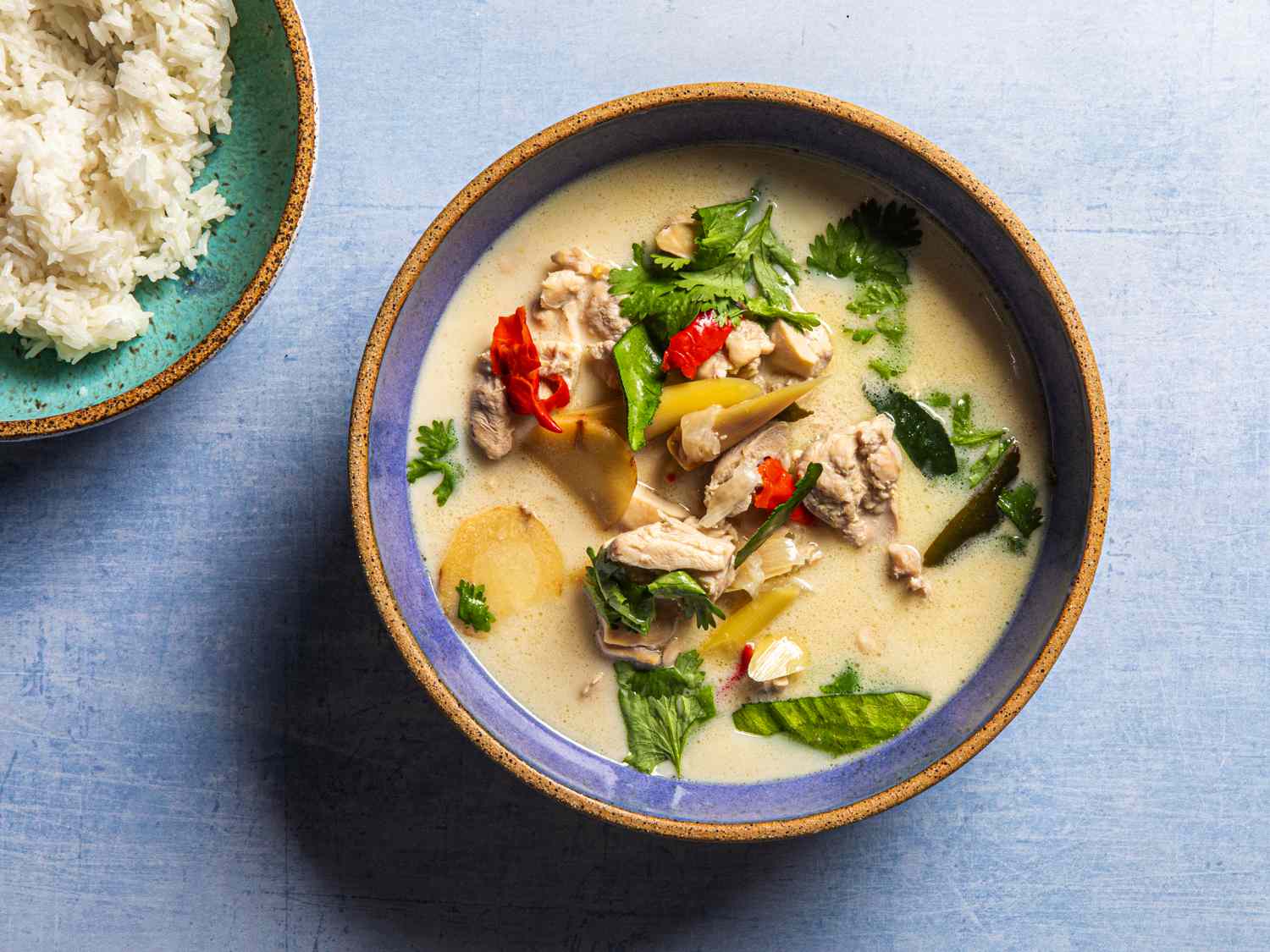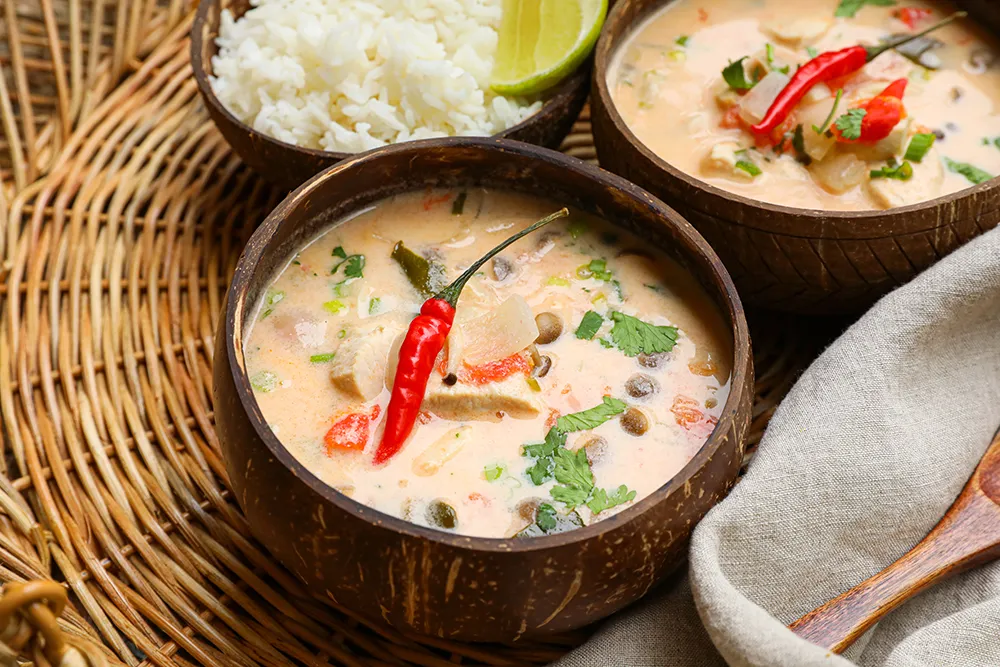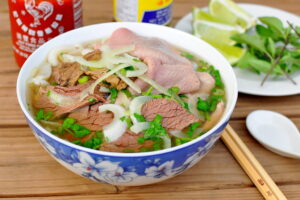Tom Kha Gai, a traditional Thai coconut soup with chicken, is a dish beloved by many for its harmonious blend of creamy coconut milk, zesty lime, fragrant lemongrass, and spicy chili. This dish, which has roots deep in Thai culinary history, has long been celebrated for its rich, comforting flavors and its ability to balance sour, spicy, salty, and sweet in perfect equilibrium. However, like many traditional dishes, Tom Kha Gai is undergoing a transformation as chefs and home cooks alike experiment with new ingredients and techniques to create contemporary versions that appeal to modern palates.
In this article, we will explore the origins of Tom Kha Gai, delve into its traditional preparation, and examine how it is being reimagined in today’s culinary landscape, both in Thailand and around the world.
The Origins of Tom Kha Gai

Tom Kha Gai, which literally translates to “boiled galangal chicken,” has its roots in Central Thailand, a region known for its aromatic and richly flavored dishes. The soup is believed to have originated from the kitchens of royal Thai households, where cooks would experiment with local ingredients to create dishes that were both flavorful and visually appealing. Over time, Tom Kha Gai became a staple of Thai cuisine, widely popularized and enjoyed by people from all walks of life.
The base of Tom Kha Gai is coconut milk, which provides the soup with its signature creamy texture and sweetness. Galangal, a rhizome similar to ginger but with a more citrusy and piney flavor, is another key ingredient, imparting the soup with a distinctive, aromatic quality. Other essential ingredients include lemongrass, kaffir lime leaves, and bird’s eye chili, all of which contribute to the soup’s complex flavor profile. Traditionally, the soup is made with chicken, but variations with shrimp (Tom Kha Goong) or mushrooms (Tom Kha Het) are also common.
Traditional Preparation of Tom Kha Gai
Preparing Tom Kha Gai in the traditional way involves several steps, each designed to bring out the best in the ingredients. First, coconut milk is gently heated with slices of galangal, lemongrass, and kaffir lime leaves, allowing the flavors to infuse into the milk. It is important to heat the coconut milk slowly, as boiling it too vigorously can cause it to separate.
Once the coconut milk is infused, the chicken is added and cooked until tender. Fish sauce is used to season the soup, providing the salty umami flavor that is essential to Thai cuisine. Lime juice is added at the end, giving the soup its characteristic tangy kick. The final touch is the addition of bird’s eye chili, which adds a spicy element to the dish. The soup is often garnished with fresh cilantro and served with steamed jasmine rice, making it a hearty and satisfying meal.
Contemporary Twists on Tom Kha Gai
In recent years, Tom Kha Gai has been reinterpreted in various ways by chefs and food enthusiasts who are keen to explore new culinary boundaries while still honoring the traditional flavors of the dish. These contemporary versions of Tom Kha Gai reflect the growing trend of fusion cuisine, where classic dishes are reimagined with modern ingredients and techniques.
One popular trend is the incorporation of different proteins and vegetables into the soup. While chicken remains a popular choice, some chefs are experimenting with seafood, tofu, or even plant-based meats to cater to a wider audience, including vegetarians and vegans. Shrimp, for instance, adds a delicate sweetness to the soup, while tofu provides a neutral, absorbent canvas that takes on the flavors of the broth.
Another innovation is the use of different types of coconut milk or cream to adjust the richness and texture of the soup. Some chefs are using coconut cream for a thicker, more luxurious version of the dish, while others are experimenting with lighter versions made from blended coconut and water, which reduce the calorie count without sacrificing flavor.
Vegetables like shiitake mushrooms, cherry tomatoes, and baby corn are also being added to the soup, introducing new textures and flavors. These additions not only make the soup more visually appealing but also enhance its nutritional value, making it a more well-rounded meal.
Global Influence and Adaptation

The globalization of cuisine has played a significant role in the evolution of Tom Kha Gai. As Thai food has become more popular around the world, chefs in different countries have put their own spin on the dish, incorporating local ingredients and flavors. In Western countries, for example, variations of Tom Kha Gai might include the addition of cream for extra richness, or the use of locally sourced herbs and spices that may differ slightly from the traditional Thai ingredients.
In some cases, the soup is adapted to suit the palates of different cultures. For instance, in regions where spicy food is not as commonly enjoyed, the heat level of the soup might be toned down, with fewer chilies used in the recipe. Conversely, in areas where spicy food is popular, chefs might add extra chilies or use hotter varieties to increase the soup’s heat.
The presentation of Tom Kha Gai has also evolved, particularly in fine dining settings where the dish might be deconstructed and served in a more minimalist or artistic fashion. For example, the soup might be served with the broth poured tableside over a carefully arranged selection of chicken, mushrooms, and herbs, creating a visually stunning and interactive dining experience.
Tom Kha Gai in Modern Thai Cuisine
In Thailand, Tom Kha Gai continues to be a beloved dish, but it too is evolving as the country’s culinary scene becomes more innovative and diverse. Young Thai chefs, many of whom have trained abroad, are returning to Thailand with new ideas and techniques, which they are incorporating into traditional dishes like Tom Kha Gai.
One such trend is the use of molecular gastronomy to reinterpret the dish. Some chefs are experimenting with techniques like spherification to create “coconut pearls” that burst in the mouth, releasing the flavors of the soup in a new and surprising way. Others are using modernist techniques to create foams, gels, and other textures that add a new dimension to the dish.
There is also a growing movement towards using locally sourced, sustainable ingredients in the preparation of Tom Kha Gai. Chefs are seeking out organic produce, free-range chicken, and artisanal fish sauce, aiming to elevate the dish while supporting local farmers and producers. This approach not only enhances the flavor and quality of the dish but also reflects a broader trend in the culinary world towards sustainability and ethical sourcing.
The Future of Tom Kha Gai
As Tom Kha Gai continues to evolve, it is clear that this classic Thai dish has a bright future. Its versatility and complex flavor profile make it a perfect candidate for reinterpretation and innovation, allowing chefs and home cooks to put their own stamp on the dish while still respecting its traditional roots.
Looking ahead, we can expect to see even more creative versions hometogel of Tom Kha Gai as culinary trends continue to evolve. Whether it’s through the use of cutting-edge cooking techniques, the incorporation of new and exotic ingredients, or the exploration of different cultural influences, Tom Kha Gai is likely to remain a dynamic and ever-changing dish that continues to captivate food lovers around the world.
In conclusion, Tom Kha Gai is more than just a comforting Thai soup; it is a dish that embodies the rich culinary heritage of Thailand while also embracing the possibilities of modern gastronomy. As it evolves, it offers a fascinating glimpse into how traditional dishes can be reimagined for contemporary audiences, ensuring that they remain relevant and exciting for generations to come. Whether you enjoy it in its traditional form or as part of a modern fusion menu, Tom Kha Gai is a dish that is sure to delight and inspire.
Read More Article About “Jadeite: Experience the Majestic Beauty and Timeless Power of This Legendary Gemstone“








